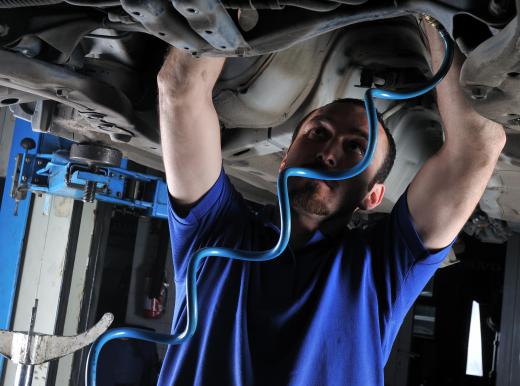An air receiver is an essential part of a compressed air system. The receiver is the component of a compressed air delivery system that stores air produced by the compressor. The receiver also acts as a buffer to help regulate demand for the air versus the amount of air that is being used downstream from the receiver. Compressed air systems are used in industry, garages, factories, assembly lines, and many other places. Using compressed air, workers can operate tools, clean work spaces, and build products more efficiently.
One purpose of an air receiver is to help modulate the demand for air from the compressor to the end user of the compressed air. Since most systems are designed so that the maximum output of the air compressor exceeds the maximum possible demand by the end user, an air receiver will help by storing excess air that is not being immediately used by the end user. This allows the compressor to run less frequently because it does not have to cycle on and off constantly as air in the system is depleted. Think of the receiver as a gallon jug of water in the refrigerator — instead of running the faucet for each glass of water, it is possible to simply fill the jug and fill from it. An air receiver works in the exact same way.

Another important role of an air receiver is to equalize pressure differences from the compressor’s on/off cycle. When the compressor turns on, pressure is high, and when it shuts off and air begins to be depleted from the system, pressure drops. By helping to maintain a constant supply of air at a constant pressure, an air receiver acts as a pressure regulating device; it helps to keep the pressure stable during the shift from high to low pressure as air is depleted and conversely from low to high pressure as the compressor turns on. This helps to avoid wear and tear on the air system, the compressor, and the tools at the point of use.

Air receivers are an integral part of any compressed air system. Such receivers will often be seen at the end of the line near the point of use. Sometimes, a system will have two receivers — one positioned at the beginning of the system and a second receiver placed closer to the end user.
